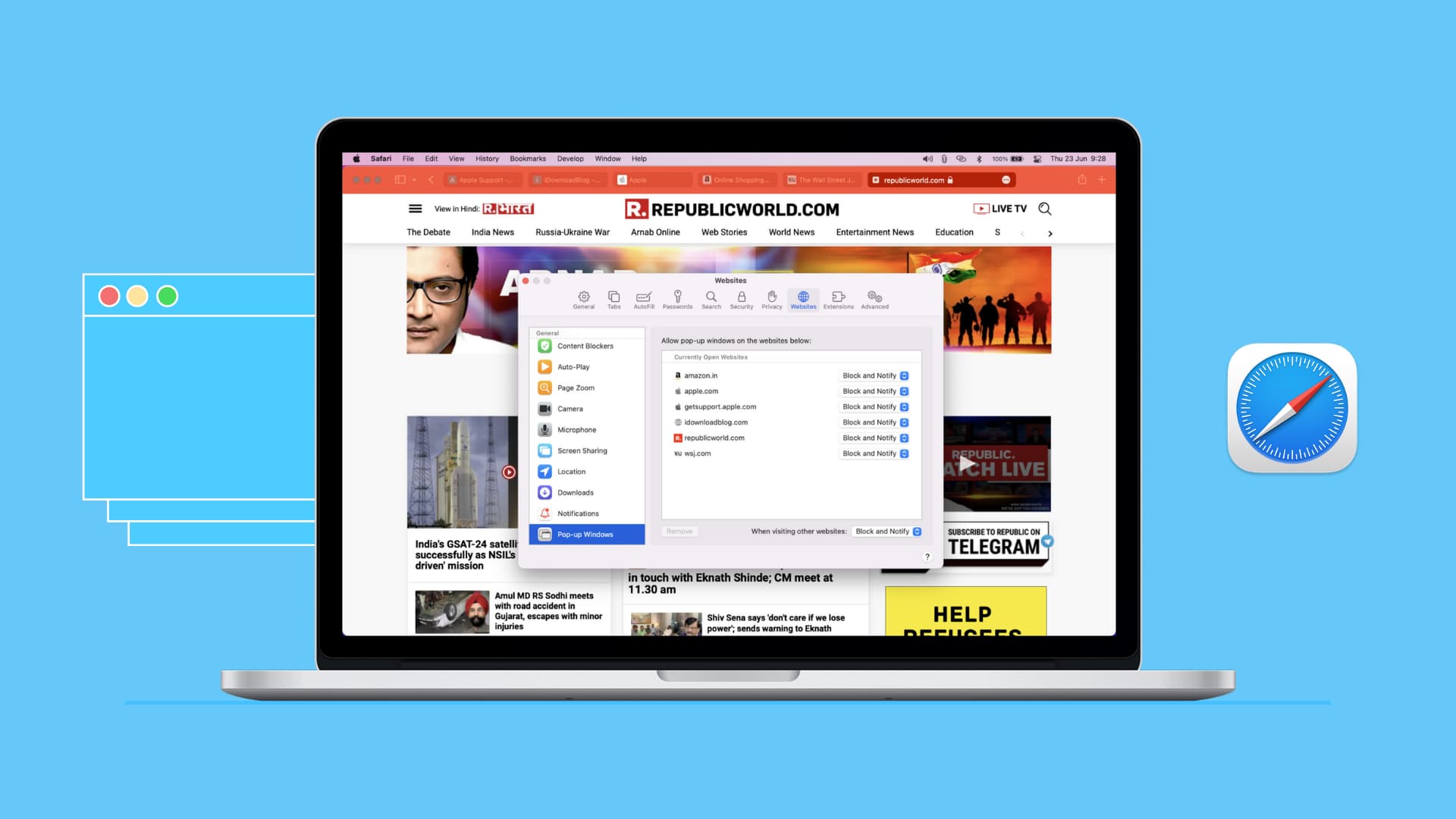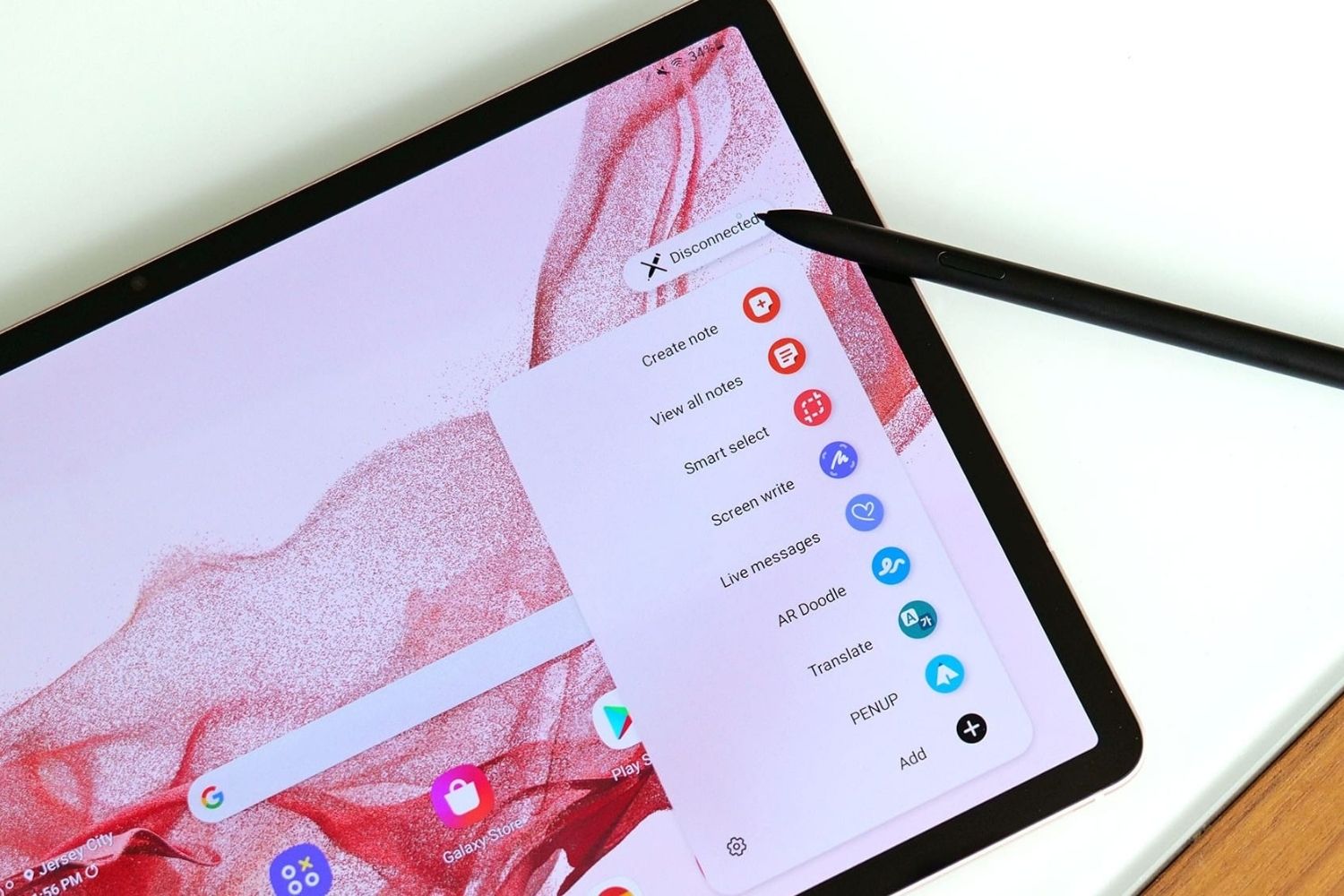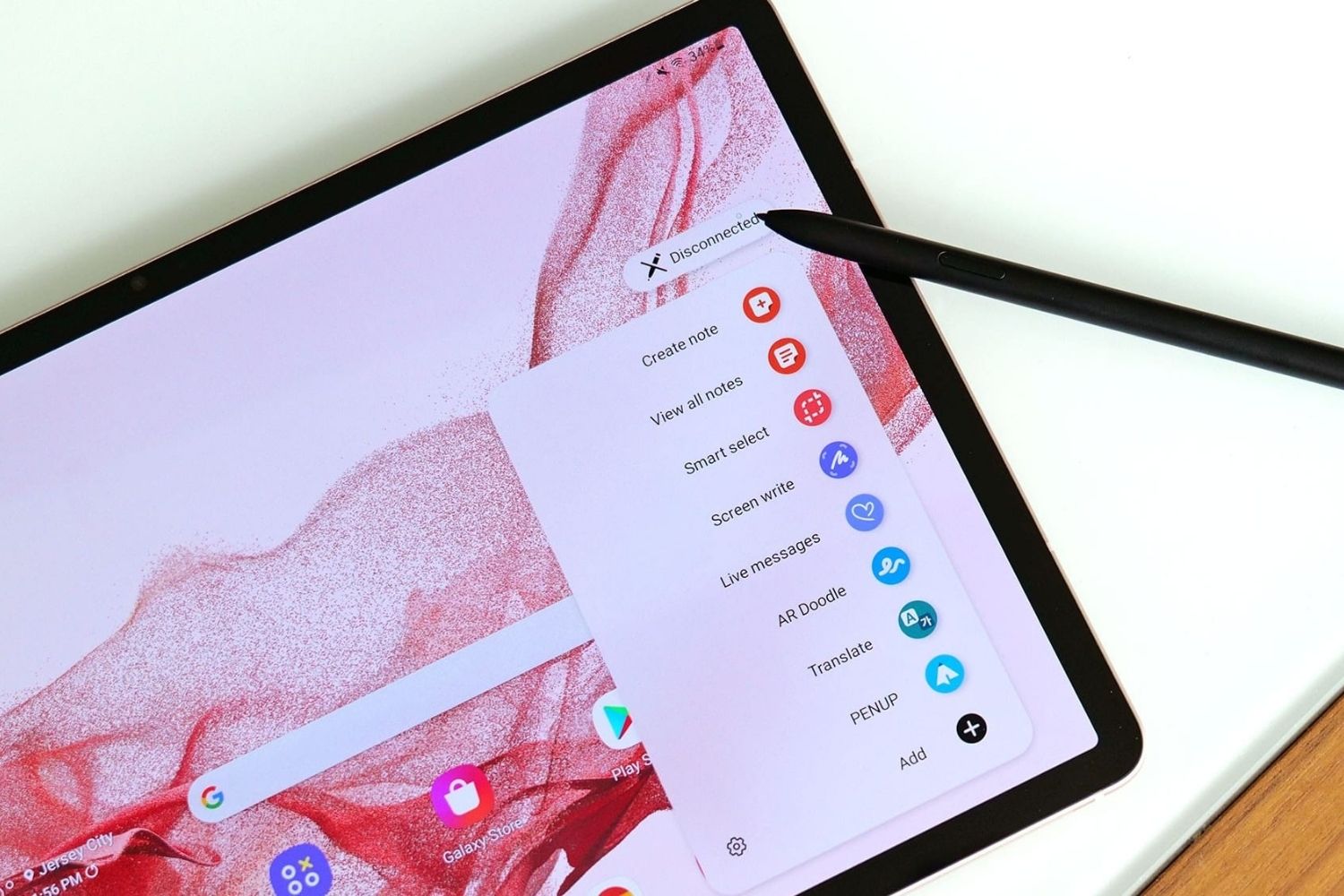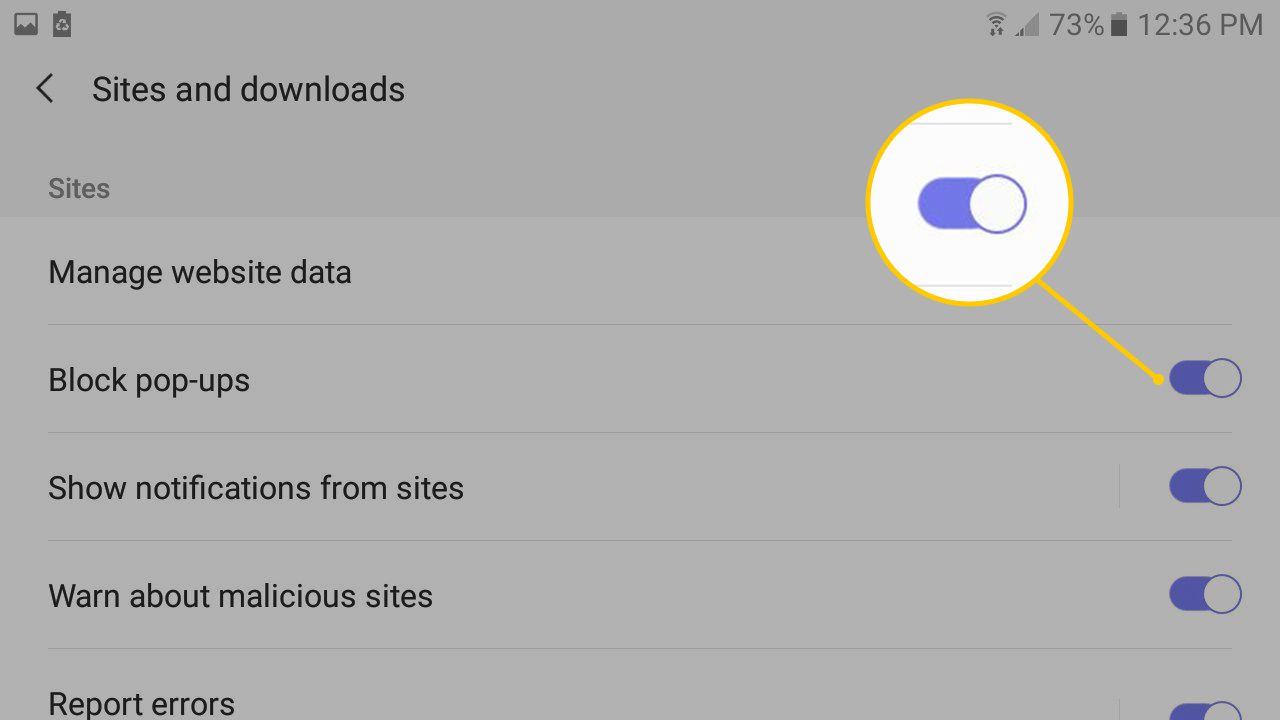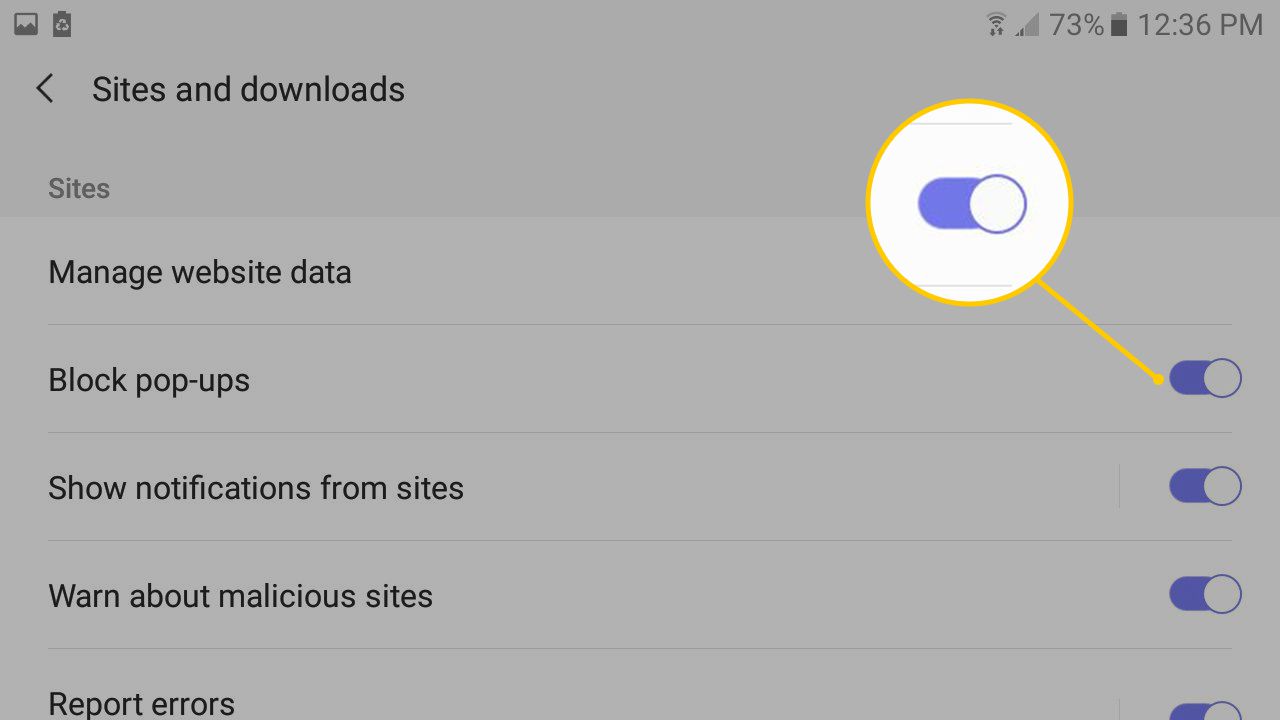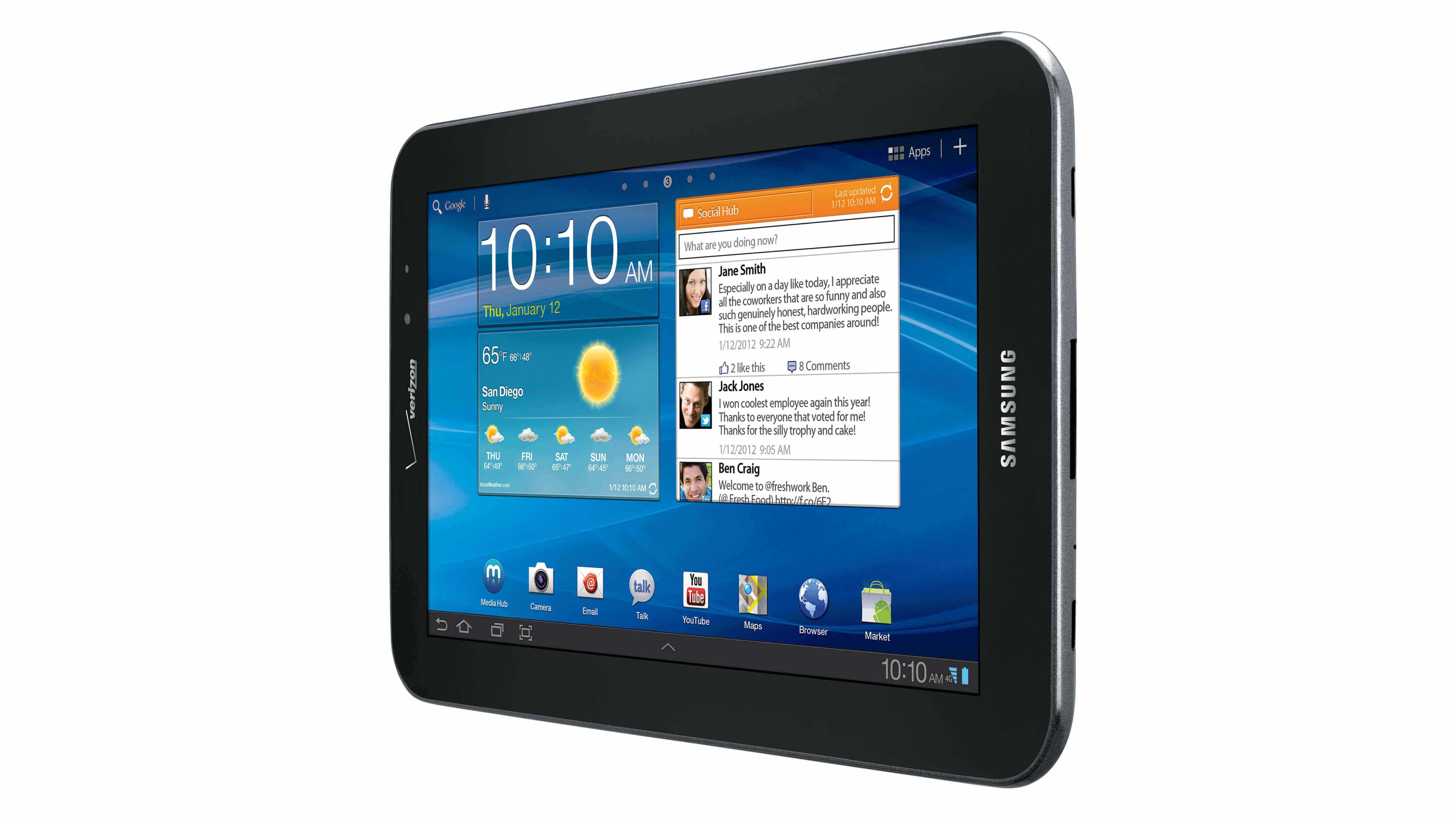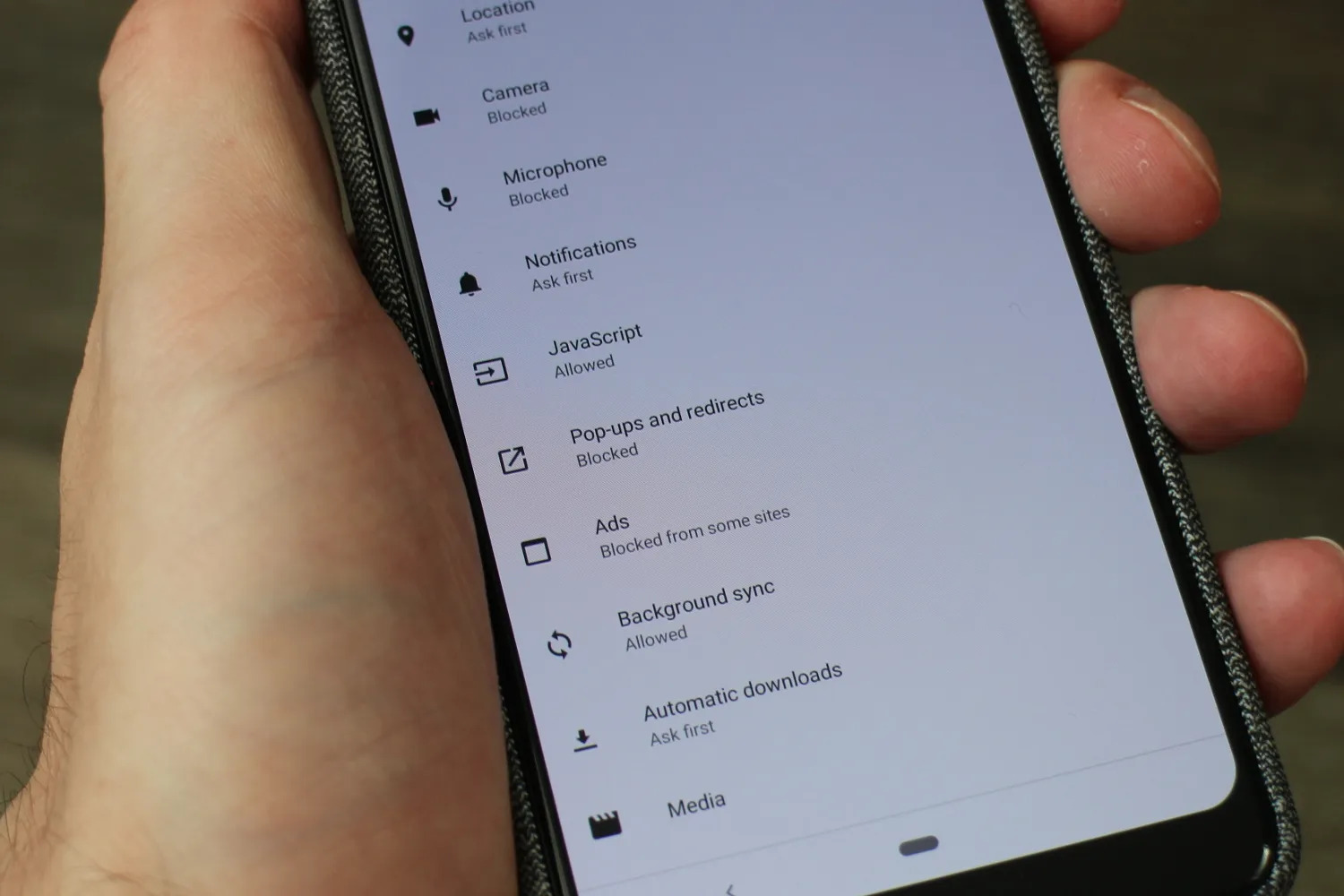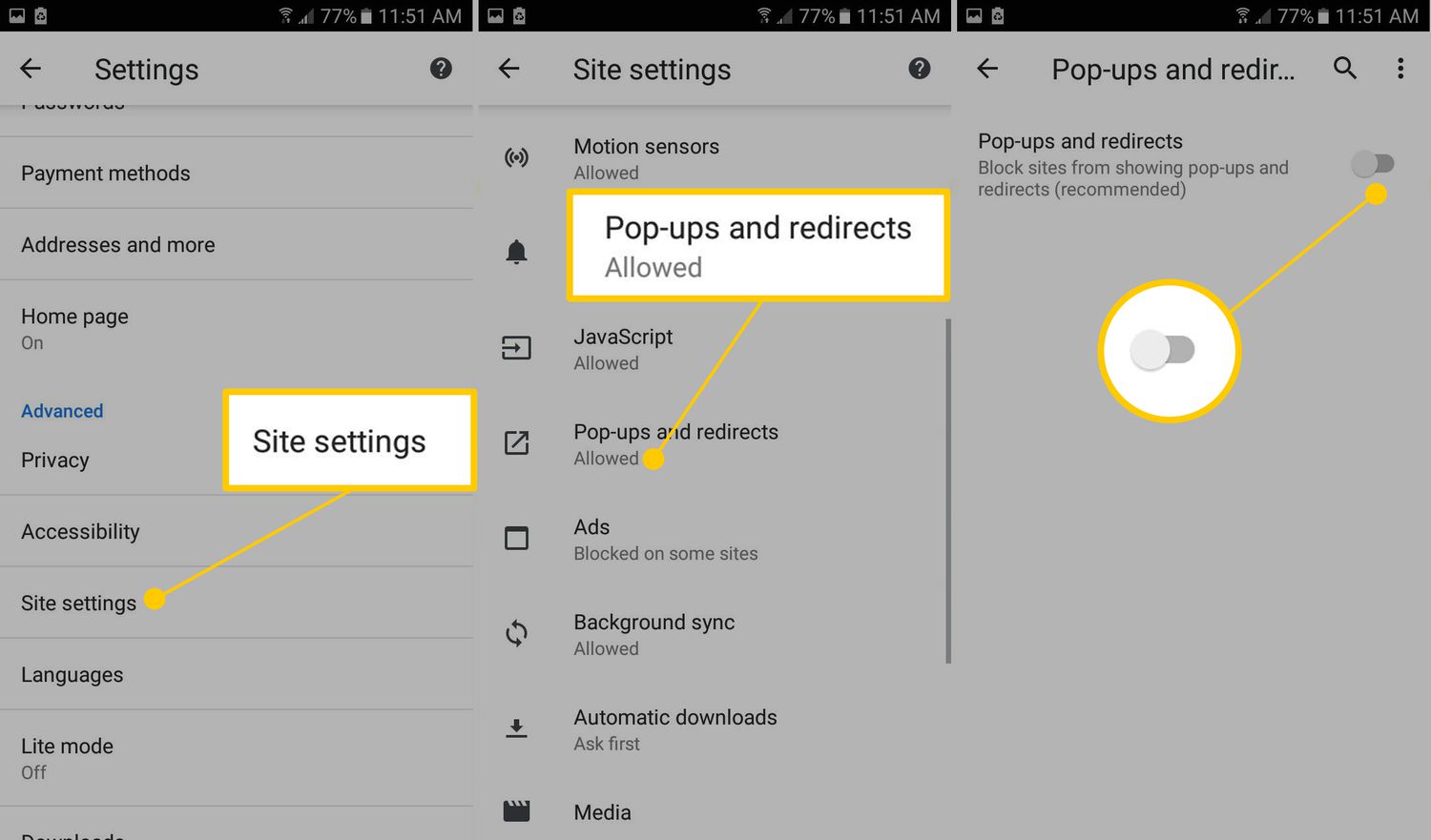Introduction
Pop-up ads have become an unavoidable annoyance for many Android tablet users. These intrusive advertisements can disrupt your browsing experience, slow down your device, and even pose a security risk. Fortunately, there are several methods you can use to block pop-up ads on your Android tablet and regain control of your browsing experience.
Pop-up ads are small, floating windows that appear on your screen while you are browsing the internet. They often contain promotional messages, offers, or links to other websites. These ads can be triggered by certain websites, malicious software, or even legitimate apps that have integrated ad-serving networks.
There are several reasons why you might want to block pop-up ads on your Android tablet. Firstly, they can be extremely annoying, constantly interrupting your browsing session and making it difficult to navigate the web. Secondly, pop-up ads can slow down your device and consume valuable system resources. This can result in a sluggish browsing experience, causing frustration and decreasing your productivity. Additionally, some pop-up ads can be deceptive and may lead to phishing sites or malware downloads, which can compromise your device’s security and privacy.
If you’re tired of dealing with pop-up ads on your Android tablet, don’t worry – there are solutions available to help you reclaim your browsing experience. In the following sections, we will explore various methods that you can use to block pop-up ads and enjoy a smoother and more secure browsing experience on your Android tablet.
What are pop-up ads?
Pop-up ads are a type of online advertising that appear in separate browser windows or as overlays on a webpage. These ads are designed to catch the user’s attention by “popping up” on the screen, often covering the content that the user is trying to view.
Pop-up ads can take various forms, including banners, videos, or interactive elements. They are typically triggered by specific actions, such as clicking on a link or visiting a particular website. Pop-up ads are commonly used by advertisers to promote products, services, or special offers.
One of the most frustrating aspects of pop-up ads is their intrusive nature. They can disrupt the user’s browsing experience by appearing unexpectedly and interrupting the flow of content. These ads can be particularly bothersome on mobile devices, where screen real estate is limited and users want to quickly find the information they need.
Pop-up ads can also be problematic from a security standpoint. While many pop-ups are harmless and simply aim to grab the user’s attention, there are also malicious pop-ups that attempt to deceive or trick users. These malicious pop-ups may lead to phishing websites or prompt the user to download malware-infected files. Therefore, it’s important to be cautious when interacting with pop-up ads and to take steps to protect your device’s security.
In recent years, web browsers and operating systems have taken measures to combat pop-up ads. Most modern browsers include built-in pop-up blockers that attempt to identify and block these types of intrusive ads. However, not all pop-up ads can be caught by these blockers, and some users may still encounter unwanted pop-ups.
To address this issue, there are additional methods you can use to block pop-up ads on your Android tablet. These methods range from enabling the built-in pop-up blocker in your browser to installing specialized ad-blocking apps. In the following sections, we will explore these methods in more detail, providing you with the knowledge and tools to effectively combat pop-up ads.
Why block pop-up ads?
Pop-up ads are not only annoying but can also have negative effects on your overall browsing experience. Here are several reasons why you should consider blocking pop-up ads on your Android tablet:
- Improved Browsing Experience: Pop-up ads can disrupt your browsing session by appearing unexpectedly and covering the content you are trying to view. They can make it difficult to read articles, watch videos, or interact with websites. By blocking pop-up ads, you can enjoy a smoother and more seamless browsing experience.
- Enhanced Device Performance: Pop-up ads consume system resources, such as CPU and memory, which can slow down your Android tablet. This can result in laggy performance, delayed page loading, and overall sluggishness. By blocking pop-up ads, you can free up system resources and optimize your device’s performance.
- Protection against Malicious Content: Some pop-up ads are designed to deceive users or promote malicious websites. These ads may redirect you to phishing sites that attempt to steal your personal information or prompt you to download malware-infected files. By blocking pop-up ads, you can reduce the risk of falling victim to these scams and protect your device from potential security threats.
- Reduced Data Usage: Pop-up ads often contain multimedia elements, such as videos or animations, that consume a significant amount of data. This can quickly eat into your monthly data allowance, leading to additional costs or slower internet speeds. By blocking pop-up ads, you can conserve your data and manage your internet usage more efficiently.
- Preservation of Privacy: Some pop-up ads may track your browsing behavior and collect your personal information for targeted advertising purposes. By blocking pop-up ads, you can safeguard your privacy and prevent your data from being shared with third-party advertisers.
With these compelling reasons in mind, it’s clear that blocking pop-up ads is beneficial for a better browsing experience, improved device performance, enhanced security, and increased privacy. In the following sections, we will explore various methods that you can use to effectively block pop-up ads on your Android tablet and enjoy a more enjoyable and secure online experience.
Method 1: Enable Chrome’s pop-up blocker
If you frequently use the Google Chrome browser on your Android tablet, you can take advantage of its built-in pop-up blocker to reduce the number of intrusive ads you see. Here’s how to enable Chrome’s pop-up blocker:
- Open the Chrome browser on your Android tablet.
- Tap on the three-dot menu icon located in the upper-right corner of the screen.
- Scroll down and tap on “Settings”.
- Under the “Advanced” section, tap on “Site settings”.
- Tap on “Pop-ups and redirects”.
- Toggle the switch next to “Allowed” to disable pop-ups.
By following these steps, you can prevent pop-up ads from appearing while using the Chrome browser on your Android tablet. It’s worth noting that this setting applies to all websites, so you won’t have to worry about pop-ups disrupting your browsing experience.
Keep in mind that some legitimate websites may use pop-ups for essential features or content. If you find that certain websites you trust are being blocked from displaying pop-ups, you can easily add them to the “Allow” list in the same “Pop-ups and redirects” settings screen.
Enabling Chrome’s pop-up blocker is a simple yet effective method of reducing the annoyance caused by pop-up ads on your Android tablet. However, it’s important to note that this method only applies to the Chrome browser. If you use other browsers on your device, you will need to explore separate settings or methods to block pop-up ads within those specific browsers.
In the next sections, we will explore additional methods, including installing ad-blocking apps and adjusting browser settings, to further enhance your pop-up ad blocking capabilities on your Android tablet.
Method 2: Install an ad blocker app
If you want a more comprehensive solution to block pop-up ads on your Android tablet, installing an ad blocker app is a highly effective method. Ad blocker apps are specifically designed to filter out intrusive ads, including pop-ups, across various browsers and apps on your device. Here’s how you can install and use an ad blocker app:
- Open the Google Play Store on your Android tablet.
- Search for “ad blocker” or “ad blocker app” in the search bar.
- Choose a reputable ad blocker app from the search results. Popular options include AdGuard, Adblock Plus, and Blokada.
- Tap on the app to open its installation page.
- Tap on “Install” or “Get” to download and install the app onto your device.
- Once the installation is complete, open the ad blocker app.
- Follow the on-screen instructions to set up the app and configure its blocking settings.
- Typically, the ad blocker app will provide options to block pop-up ads, banners, video ads, and other types of intrusive advertisements.
- Enable the necessary options to block pop-up ads specifically.
- After configuring the settings, exit the ad blocker app and continue browsing as usual.
By installing an ad blocker app, you can enjoy an ad-free browsing experience on your Android tablet. These apps work by creating a filter between your device and the internet, blocking unwanted ads from appearing in your browser and other applications.
Keep in mind that some ad blocker apps may require certain permissions to function effectively. Additionally, not all ad blocker apps are available for free, and some may offer premium features or subscription plans. It is recommended to read user reviews and choose a reputable ad blocker app that suits your needs and preferences.
In the next sections, we will explore additional methods to block pop-up ads on your Android tablet, including adjusting browser settings, updating your browser, and disabling notifications from unknown sources.
Method 3: Adjust browser settings
If you prefer not to install additional apps on your Android tablet, you can still block pop-up ads by adjusting the settings in your preferred browser. Different browsers may have different settings, but most offer options to prevent pop-up ads from appearing. Here’s how you can adjust the browser settings to block pop-up ads:
- Open your preferred browser app on your Android tablet.
- Tap on the menu icon, typically represented by three vertical dots or lines, located in the upper-right or lower-right corner of the screen.
- Scroll down and tap on “Settings” or “Options”.
- Look for a section related to “Privacy and Security” or “Site Settings”.
- Within that section, locate an option for blocking or disabling pop-up ads.
- Toggle the switch or checkbox to enable the pop-up blocker.
Each browser may have a different interface or naming convention for its settings, so be sure to explore the options and look for keywords related to pop-up ads or ad blocking.
In addition to enabling the pop-up blocker, you may also find other settings related to ad blocking or content filtering. These settings can further enhance your browsing experience by blocking a wider range of intrusive ads beyond just pop-ups.
It’s important to note that adjusting browser settings to block pop-up ads only applies to the specific browser you are using. If you use multiple browsers on your Android tablet, you will need to adjust the settings in each browser individually.
In the next sections, we will cover additional methods, including updating your browser and disabling notifications from unknown sources, to ensure a more comprehensive approach to blocking pop-up ads on your Android tablet.
Method 4: Update your browser
Maintaining an up-to-date browser version is crucial for a smooth and secure browsing experience on your Android tablet. In many cases, outdated browser versions can be more vulnerable to pop-up ads and other security risks. By regularly updating your browser, you can take advantage of the latest security features and bug fixes, which can help in blocking pop-up ads. Here’s how you can update your browser:
- Open the Google Play Store on your Android tablet.
- Tap on the menu icon, represented by three horizontal lines, located in the upper-left corner of the screen.
- Tap on “My apps & games” or “Updates” from the menu.
- A list of installed apps with available updates will be displayed.
- Look for your preferred browser app from the list.
- If an update is available, you will see the “Update” button next to the browser app.
- Tap on “Update” to initiate the update process.
- Wait for the update to finish downloading and installing.
- Once the update is complete, open your updated browser to enjoy the latest features and improvements.
Updating your browser not only helps in blocking pop-up ads more effectively but also provides a better overall browsing experience. The updated version often comes with enhanced performance, new features, and improved compatibility with websites and web standards.
In addition to updating your browser regularly, it is also recommended to enable automatic updates for your browser in the Google Play Store settings. This way, you can ensure that you always have the latest version installed on your Android tablet without manually checking for updates.
By keeping your browser up to date, you can maximize its pop-up blocking capabilities and stay protected from security vulnerabilities.
In the next section, we will explore another method to block pop-up ads on your Android tablet, which is by disabling notifications from unknown sources.
Method 5: Disable notifications from unknown sources
Another effective method to minimize pop-up ads on your Android tablet is by disabling notifications from unknown sources. Sometimes, these notifications can contain ads or lead to websites that generate pop-up ads. By limiting notifications to trusted sources, you can reduce the chances of encountering intrusive ads. Here’s how you can disable notifications from unknown sources:
- Open the Settings app on your Android tablet.
- Scroll down and tap on “Apps” or “Applications”.
- Look for the specific browser app you are using or any other apps that generate unwanted notifications.
- Tap on the app name to open its settings.
- Scroll down and locate the “Notifications” or “App notifications” section.
- Within the notifications settings, you may see options to block or disable notifications.
- Toggle the switch or checkbox to disable notifications from unknown sources.
Disabling notifications from unknown sources can help you have a more peaceful and uninterrupted browsing experience. This method prevents random ads or promotional notifications from popping up on your device and potentially leading to pop-up ads.
It’s important to note that this method may disable notifications from all sources, including legitimate ones, depending on your settings. Therefore, make sure to review and adjust the notifications settings for each app on your Android tablet to suit your preferences.
By selectively allowing notifications only from trusted sources, such as your favorite websites or apps, you can minimize the chances of encountering intrusive pop-up ads while still receiving relevant and desired notifications.
In the next section, we will cover an additional method to further optimize your browsing experience on your Android tablet, which involves clearing cache and cookies.
Method 6: Clear cache and cookies
One way to effectively block pop-up ads on your Android tablet is by regularly clearing the cache and cookies of your browser. Cache and cookies are temporary files stored by your browser that can sometimes contain data related to pop-up ads. By clearing these files, you can remove any stored information that might be contributing to the display of pop-up ads. Here’s how you can clear the cache and cookies:
- Open your preferred browser app on your Android tablet.
- Tap on the menu icon, typically represented by three vertical dots or lines, located in the upper-right or lower-right corner of the screen.
- Scroll down and tap on “Settings” or “Options”.
- Look for a section related to “Privacy and Security” or “Site Settings”.
- Within that section, locate an option for “Clear cache” or “Clear browsing data”.
- Select the time range for which you want to clear the cache and cookies. You can choose to clear the data from the past hour, day, week, or from the beginning of time.
- Ensure that the options for “Cache” and “Cookies” are selected.
- Tap on the “Clear” or “Delete” button to remove the cache and cookies.
Clearing the cache and cookies periodically can help in reducing the frequency of pop-up ads on your Android tablet. It essentially resets your browsing state and removes any stored data that might be contributing to the appearance of pop-up ads.
However, keep in mind that clearing the cache and cookies will also remove any saved website data, such as login information or preferences. You may need to re-enter login credentials or adjust personalized settings after clearing the cache and cookies.
By regularly clearing the cache and cookies, you can maintain a clean browsing environment and minimize the chances of encountering intrusive pop-up ads.
Now that you have learned various methods to block pop-up ads on your Android tablet, you can choose the one that suits you best or combine multiple methods for an even more effective ad-blocking strategy.
Conclusion
Pop-up ads can be incredibly frustrating and disruptive when browsing the internet on your Android tablet. Fortunately, there are several methods you can employ to block these intrusive ads and enjoy a more seamless and secure browsing experience.
Enabling the built-in pop-up blocker in your preferred browser, such as Google Chrome, is a simple and effective way to reduce the number of pop-up ads you encounter. Additionally, installing an ad blocker app from the Google Play Store can provide a more comprehensive solution by filtering out intrusive ads across different browsers and apps on your device.
Adjusting browser settings, such as disabling pop-ups or updating your browser to the latest version, can further enhance your pop-up ad blocking capabilities. It is also recommended to disable notifications from unknown sources, as they can lead to pop-up ads or unwanted promotional notifications.
Regularly clearing the cache and cookies of your browser can help reset your browsing state and minimize the chances of encountering pop-up ads. This method removes any stored data that might be contributing to the appearance of pop-up ads.
By utilizing these methods and combining them as necessary, you can regain control of your browsing experience on your Android tablet and mitigate the annoyance caused by pop-up ads. Enjoy a smoother, faster, and more secure browsing experience while protecting your privacy and conserving your data.
Remember to explore the settings and options available in your specific browser and ad blocker apps to customize your ad-blocking preferences and ensure a tailored ad-free experience that suits your needs.
Implementing these methods will allow you to make the most out of your Android tablet, enjoying the content you desire without the constant interruptions of pop-up ads. Embrace a clutter-free browsing experience and reclaim control over your online interactions. Happy browsing!







